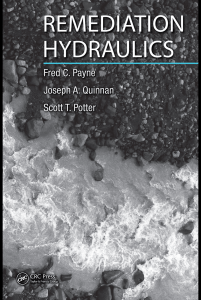Uploaded by
common.user10788
Proton Conductivity of Sulfonated Polysulfone/Polyvinyltriazole Membranes
advertisement
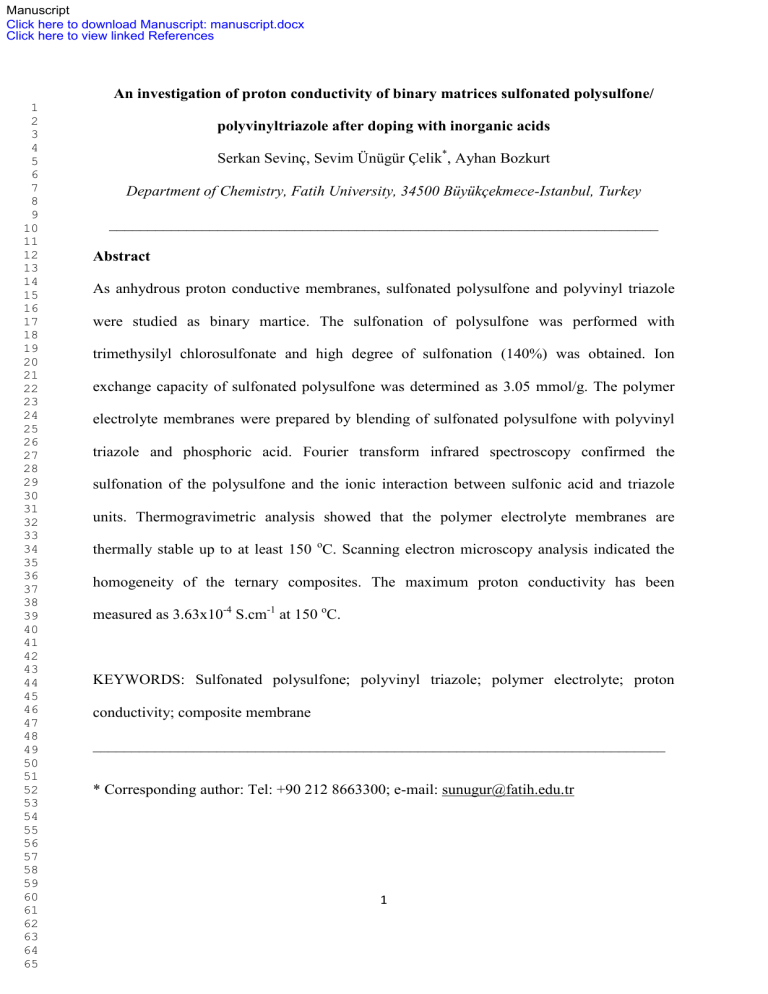
Manuscript Click here to download Manuscript: manuscript.docx Click here to view linked References An investigation of proton conductivity of binary matrices sulfonated polysulfone/ 1 2 3 4 5 6 7 8 9 10 11 12 13 14 15 16 17 18 19 20 21 22 23 24 25 26 27 28 29 30 31 32 33 34 35 36 37 38 39 40 41 42 43 44 45 46 47 48 49 50 51 52 53 54 55 56 57 58 59 60 61 62 63 64 65 polyvinyltriazole after doping with inorganic acids Serkan Sevinç, Sevim Ünügür Çelik*, Ayhan Bozkurt Department of Chemistry, Fatih University, 34500 Büyükçekmece-Istanbul, Turkey _______________________________________________________________________ Abstract As anhydrous proton conductive membranes, sulfonated polysulfone and polyvinyl triazole were studied as binary martice. The sulfonation of polysulfone was performed with trimethysilyl chlorosulfonate and high degree of sulfonation (140%) was obtained. Ion exchange capacity of sulfonated polysulfone was determined as 3.05 mmol/g. The polymer electrolyte membranes were prepared by blending of sulfonated polysulfone with polyvinyl triazole and phosphoric acid. Fourier transform infrared spectroscopy confirmed the sulfonation of the polysulfone and the ionic interaction between sulfonic acid and triazole units. Thermogravimetric analysis showed that the polymer electrolyte membranes are thermally stable up to at least 150 oC. Scanning electron microscopy analysis indicated the homogeneity of the ternary composites. The maximum proton conductivity has been measured as 3.63x10-4 S.cm-1 at 150 oC. KEYWORDS: Sulfonated polysulfone; polyvinyl triazole; polymer electrolyte; proton conductivity; composite membrane __________________________________________________________________________ * Corresponding author: Tel: +90 212 8663300; e-mail: [email protected] 1 1. Introduction 1 2 3 4 5 6 7 8 9 10 11 12 13 14 15 16 17 18 19 20 21 22 23 24 25 26 27 28 29 30 31 32 33 34 35 36 37 38 39 40 41 42 43 44 45 46 47 48 49 50 51 52 53 54 55 56 57 58 59 60 61 62 63 64 65 Proton conducting polymers are attractive materials due to their potential applications in proton exchange membrane fuel cells (PEMFCs), electrochromic devices (ECDs) and supercapacitor (Daletou et al 2005; Celik et al 2012; He et al 2006 ). A perfluorosulfonic acid type polymer, Nafion is currently used as the polymer electrolyte in PEMFC. It has hydrophilic and hydrophobic regions and the proton transfer occurs via water molecules present in their hydrophilic channels. Several functional polymers were produced to produce alternative polymer matrices to Nafion. Among several sulfonated systems (Göktepe et al 2008; Lufrano et al 2000; Kim et al 2007; Yamada et al 2005; Günday et al 2006). polystyrene (Göktepe et al 2008) and polysulfone (Lufrano et al 2000) are mostly used as homopolymer or composites. These acidic polymers have high water uptake and if used as humidified condition their usage are limited to 100 oC. Therefore alternative materials such as benzimidazole (Kim et al 2007), imidazole (Yamada et al 2005) and triazole (Günday et al 2006) were intercalated in these acidic polymers to provide proton conduction at high temperature. In addition they are also blended with polyvinyl imidazole (Pu et al 2001) and polyvinyl triazole (Sen et al 2010). Sulfonated polysulfone (SPSU) is one of the acid functional polymer that is produced with chemical sulfonation of polysulfones which are known with their high thermal, chemical and mechanical stability (Furtado et al 2010). SPSU can be used as proton conductive membrane if it is highly sulfonated and has high water uptake property (Filho et al 2010; Chen et al 2005). The proton conductivity of the sulfonated polysulfone membranes was reported as 10-2 S cm-1 at 80 oC (Lufrano et al 2001) and 3.2 x10-2 S cm-1 at 90 oC (Lufrano et al 2008). Moreover, the sulfonated polysulfone membranes have lower gas permeability and liquid 2 (water and methanol) permeability than the sulfonated perfluorinated ionomers (Lufrano et al 1 2 3 4 5 6 7 8 9 10 11 12 13 14 15 16 17 18 19 20 21 22 23 24 25 26 27 28 29 30 31 32 33 34 35 36 37 38 39 40 41 42 43 44 45 46 47 48 49 50 51 52 53 54 55 56 57 58 59 60 61 62 63 64 65 2006). Although SPSU was mostly used in humidified systems there are studies about its usage in anhydrous membranes. For this purpose SPSU was previously doped with a heterocyclic compound, 1H-1,2,3-benzotriazole and high proton conductivity was reported (Gustian et al 2012). In this study SPSU was blended with polyvinyl triazole (PVTri) which has high proton transfer capability with triazole group in each repeating unit. Several composite membranes of PVTri were previously reported such as polyvinyl phosphonic acid (Aslan and Bozkurt 2009) and polystyrene sulfonic acid (Aslan et al 2009). The proton conductivity of these composite membranes were analyzed both in humidified and anhydrous states (Aslan and Bozkurt 2009; Aslan et al 2009). In our work, the sulfonated polysulfone was synthesized with high degree of sulfonation using trimethyl silyl chlorosulfonate as sulfonating agent. The proton conductive membranes were prepared by blending sulfonated polysulfone, polyvinyl triazole and phosphoric acid (PA) at several molar ratios. Homogeneous and free standing membranes were obtained and characterized with Fourier transform infrared spectroscopy (FTIR), thermogravimetric analysis (TGA), differential scanning calorimeter (DSC) and scanning electron microscopy (SEM). The effect of polyvinyl triazole and phosphoric acid on proton conductivity was investigated with impedance analyzer. 2. Experimental Materials and Preparation The commercial polysulfone (PSU; Aldrich), trimethylsilyl chlorosulfonate (TMSCS; Aldrich), 1,2-dichloroethane (DCE; Merck), methanol (Sigma-Aldrich), dimethylformamide 3 (DMF; Merck), 1-Vinyl-1,2,4-triazole (>97%, Fluka), orthophosphoric acid (>99%, Merck) 1 2 3 4 5 6 7 8 9 10 11 12 13 14 15 16 17 18 19 20 21 22 23 24 25 26 27 28 29 30 31 32 33 34 35 36 37 38 39 40 41 42 43 44 45 46 47 48 49 50 51 52 53 54 55 56 57 58 59 60 61 62 63 64 65 and toluene (>99%, Merck) were used as received. Azobisisobutyronitrile (AIBN; Merck) was recrystallized from THF prior to use. Poly(1-vinyl-1,2,4-triazole) (Fig. 1) was produced by free radical polymerization of 1-vinyl-1,2,4-triazole in toluene using AIBN (1 mol%) as initiator. The reaction mixture was purged with nitrogen and the polymerization reaction was performed at 85 °C for 2 h. The resulting polymer was precipitated as white powder and filtered and washed several times with toluene. PVTri was dried in vacuum and stored in the glove box. Sulfonated polysulfone (Fig.1) was prepared according to the literature (Chen et al 2005). The commercial polysulfone (0.1 mol) was dissolved in 1, 2-dichloroethane at 25 ◦C for 4 h under nitrogen atmosphere. Trimethysilyl chlorosulfonate (0.15 mol) was added at room temperature as the sulfonation agent. During the reaction, N2 was purging continuously through the reaction solution and HCl was continuously produced and released out of the reactor with N2. After about 36 h, methanol was added to quench the reaction, and to cleave the silyl sulfonate moieties yielding sulfonated polysulfone. Silicon-containing compounds, methyl sulfate, dichloroethane, methanol and water were removed through evaporation first at 1 atm and then vacuum (400 mmHg) at the temperature of 55 ◦C (Gustian et al 2012). The resulting SPSU is soluble in methanol and DMF. Ion exchange capacity (IEC) of SPSU was determined by volumetric titration according to literature (Kim et al 2007). The sample was immersed and stirred in 20 mL of 0.10 M NaOH/1.0 M NaCl mixed aqueous solution (1/4 by volume) for 24 h at room temperature. Subsequently, 10 mL of 0.10 N HCl solution was added, and the excess amount of HCl was back titrated with 0.025 N NaOH aqueous solution in the presence of phenolphthalein indicator. The IEC value (mmol/g) of the samples was calculated using Eq. 1. IEC = 0.025 x (VNaOH-VB)/Wdry (1) 4 where VNaOH is volume of 0.025 N NaOH aqueous solutions for the volumetric titration, VB is 1 2 3 4 5 6 7 8 9 10 11 12 13 14 15 16 17 18 19 20 21 22 23 24 25 26 27 28 29 30 31 32 33 34 35 36 37 38 39 40 41 42 43 44 45 46 47 48 49 50 51 52 53 54 55 56 57 58 59 60 61 62 63 64 65 volume of the NaOH aqueous solution for blank titration, and Wdry is dry weight of the samples (Kim et al 2007). Using this method the IEC value of SPSU was determined as 3.05 mmol/g which indicates that the degree of sulfonation (DS) is about 140 % [(mol SO3H/repeat unit) x100]. Proton conductive composite membranes were prepared by blending of sulfonated polysulfone with polyvinyl triazole and H3PO4. A stoichiometric amount of sulfonated polysulfone, PVTri and H3PO4 were admixed in DMF with several mol ratios (X=0.5, 1, 2 and 4) for 5 h at 50 oC. The membrane was than prepared by casting of the solutions on a polished poly(tetrafluoroethylene), and the solvent was slowly evaporated at 50 oC for 24 h. To ensure complete solvent removal, the membranes were placed under vacuum 200 mmHg at 50 oC. Homogeneous and free standing membranes were obtained. Characterizations FTIR spectra were recorded on a Bruker a-P in ATR in range of 4000 cm-1 - 400 cm-1. Thermal stabilities of the polymer electrolytes were examined by TG analyses with a Perkin Elmer STA 6000. The samples (10 mg) were heated from room temperature to 700 °C under N2 atmosphere at a scanning rate of 10 °C/min. DSC measurements were carried out on a Perkin Elmer JADE DSC under nitrogen atmosphere and heating-cooling curves were recorded at a rate of 10 °C/min. The proton conductivity studies of the samples were performed using a Novocontrol dielectric-impedance analyzer. The films were sandwiched between platinum blocking electrodes and the conductivities were measured in the frequency range 1 Hz to 3 MHz at 10 °C intervals. The temperature was controlled with a Novocontrol cryosystem, which is applicable between -100 and 250 °C. 5 The morphology of the membranes was observed by scanning electron microscopy (SEM) 1 2 3 4 5 6 7 8 9 10 11 12 13 14 15 16 17 18 19 20 21 22 23 24 25 26 27 28 29 30 31 32 33 34 35 36 37 38 39 40 41 42 43 44 45 46 47 48 49 50 51 52 53 54 55 56 57 58 59 60 61 62 63 64 65 type JEOL 7001 FESEM. The samples were previously coated with gold in a sputtering device. 3. Results and discussion FT-IR Studies Fig. 2 shows the FT-IR spectra of pure polysulfone, sulfonated polysulfone, PVTri and SPSU-PVTriX-PAX composite membranes. SPSU has peaks at 687 cm-1, 1015 cm-1, 1100 cm-1, 1150 cm-1, 1240 cm-1, 1483 cm-1, 2970 cm-1, 3070 cm-1, 3440 cm-1 that corresponds to C-S, SO3, C-O, R-SO2-R, C-O, C=C (aromatic), CH (aliphatic), CH (aromatic), and OH stretching bonds, respectively (Rama et al 2006; Coates 2008; Smitha et al 2008). When compared to FTIR of PSU, the presence of -OH peaks at 3500 cm-1, symmetric and asymmetric vibrations of SO3H groups at 1156 cm-1 and 1302 cm-1 and also O=S=O stretching vibration of -SO3 groups near 1015 cm-1 in FTIR of SPSU confirm the sulfonation of PSU (Zhou et al 2011). PVTri has C-N and C=N stretchings at 1430 –1650 cm -1 range and N-N stretching at 1270 cm-1 (Celik et al 2008). In the ternary composites there is a bond at 1665 cm-1 due to N-H bending vibration of acid protonated triazole rings. Between 3500 and 2000 a broadening of the band can be related to hydrogen bonding network formation. Within 1800–900 cm−1 region, the peaks near 1100 cm−1 and 975 cm−1 are attributed to characteristic absorptions of the HPO42− and H2PO4− in the blends and they increase with phosphoric acid content (Bouchet, Siebert 1999). Thermal analysis Fig. 3 shows the thermo gravimetric analysis of PSU, SPSU, PVTri and SPSU-PVTriX-PAX composites. Pure PSU is thermally stable up to 500 °C and than major weight loss occurs due 6 to degradation of the polymeric backbone (Lufrano et al 2008). The TGA curve of SPSU has 1 2 3 4 5 6 7 8 9 10 11 12 13 14 15 16 17 18 19 20 21 22 23 24 25 26 27 28 29 30 31 32 33 34 35 36 37 38 39 40 41 42 43 44 45 46 47 48 49 50 51 52 53 54 55 56 57 58 59 60 61 62 63 64 65 two weight loss region where 30 % weight loss occurs between 200-350 oC due to degradation of sulfonic acid groups and the degradation of polymer backbone occurs above 500 oC (Smitha et al 2008; Park et al 2005). This distinct change in TGA curve also verifies the sulfonation of PSU. PVTri homopolymer is thermally stable up to 350 °C and the major weight loss derives from the thermal decomposition of the side groups and polymer main chain. The minor (10 %) weight loss up to 200 oC may be attributed to the absorbed humidity. The ternary composites can be said to be thermally stable up to at least 150 oC and decomposition temperature decreases with H3PO4 content as expected. Differential scanning calorimeter (DSC) curves of SPSU and SPSU-PVTriX-PAX are given in Fig. 4. Pure PSU and PVTri are reported to have Tg of 185 and 165 oC, respectively (Gustian et al 2012; Çelik et al 2008). After sulfonation the Tg decreased to 120 oC. SPSUPVTriX-PAX blends showed glass transition (Tg) temperatures of 115, 108, 100 and 97 oC for X=0.5, 1, 2, 4, respectively. The ternary blends have Tg values lower than pure PVTri and SPSU which is due to plasticizing effect of phosphoric acid. Morphology The morphology study is important to confirm the homogeneity of polymer-polymer blends. In this work SPSU-PVTriX-PAX membranes are observed to be more homogeneous comparing to SPSU-PVTri blends. Fig. 5 shows Scanning Electron Microscopy of the ternary composites. The membranes exhibit single phase formation which shows that the PVTri and H3PO4 uniformly distributed into the polysulfone matrix and there is no agglomeration or phase separation at micrometer and nanometer scale level. In Fig. 5d we observe many cracks in nm scale which is related with the drying procedure and has no effect on the proton conductivity or thermal properties. 7 1 2 3 4 5 6 7 8 9 10 11 12 13 14 15 16 17 18 19 20 21 22 23 24 25 26 27 28 29 30 31 32 33 34 35 36 37 38 39 40 41 42 43 44 45 46 47 48 49 50 51 52 53 54 55 56 57 58 59 60 61 62 63 64 65 Conductivity measurement The frequency dependent AC conductivities, σac (ω) of the polymer electrolyte membranes were calculated at diifferent temperatures using Eq 2; () = ac () = () o (2) where σ′ (ω) is the real part of conductivity, =2 is the angular frequency, εo is the vacuum permittivity (εo = 8.852×10−14 F/cm), and ε″ is the imaginary part of complex dielectric permittivity (ε*). The proton conductivities of anhydrous polymer electrolytes were measured from 20 to 150 °C. Fig. 6. shows the AC conductivity of SPSU-PVTri4-PA4 versus log frequency at several temperatures. The conductivity increases with the temperature and the DC conductivity (σdc) of the samples was derived from the plateaus of σac versus log frequency by linear fitting of the data. The DC conductivities of SPSU-PVTriX and SPSU-PVTriX-PAX were compared in Fig. 7. It is clear that the DC conductivity strongly depends on the temperature, PVTri and H3PO4 ratio. The maximum proton conductivity was obtained as 2.5 x 10-4 S.cm-1 and 2.3 x 10-4 S.cm-1 for SPSU-PVTri4-PA4 and SPSU-PVTri2-PA2, respectively at 150 oC. Since SPSU has high thermal stability, good mechanical and film forming property it was studied by different groups as proton conductive material but most of them are in humidified condition (Chen et al 2005; Smitha et al 2008). Sulfonated polysulfone/1H-1,2,3-triazole composite membranes were reported as anhydrous system but the system produced considerable proton conductivity at very high dopant ratios (Li et al 2005 ). Manthiram et al. immobilized 5-aminobenzotriazole to polysulfone and after blending with sulfonated poly(ether ether ketone) they investigated the proton conductivity and obtained values around 10-4 S/cm in anhydrous conditions (Li et al 2010; Fu et al 2006). In another study 8 phosphatoantimonic acid was intercalated into SPSU and after humidification they 1 2 3 4 5 6 7 8 9 10 11 12 13 14 15 16 17 18 19 20 21 22 23 24 25 26 27 28 29 30 31 32 33 34 35 36 37 38 39 40 41 42 43 44 45 46 47 48 49 50 51 52 53 54 55 56 57 58 59 60 61 62 63 64 65 investigated the proton conductivity (Genova-Dimitrova et al 2006). Previously we studied SPSU/benzotriazole system which resulted high proton conductivity at lower dopant ratios (Gustian et al 2012). In order to be used in anhydrous conditions, SPSU may be blended with azole containing polymer and the resulting channel between polymers may be filled with high proton conductive solvent such as phosphoric acid. In this work polysulfone was sulfonated with high ratio (140 %) and blended with polyvinyl triazole. Here polyvinyl triazole is considered to make ionic interaction with sulfonic acid units of SPSU. The binary mixtures resulted less homogeneous membrane and also low proton conductivity which may be due to ionic crosslink that limit the proton transfer in the matrix (Aslan et al 2009; Kim et al 2007). Therefore ternary membranes were prepared by homogeneous solution doping of SPSU/PVTri with H3PO4. Here homogeneous membranes were obtained and proton conductivity increased to 2.5x10-4 S.cm-1 at 150 oC for SPSUPVTri4-PA4. For this ternary composite the proton transfer path can be explained as Grotthuss mechanism where sulfonic acid and phosphoric acid groups protonates free nitrogens in PVTri and proton transfer occurs between protonated and non-protonated nitrogens in heterocyclic group and also sulfonate and phosphate groups (Celik et al 2012). At higher doping ratios, the DC conductivity curves show VTF (Vogel-Tamman- Fulcher) behavior which indicates the contribution of segmental motions on the proton conductivity in these novel matrices. 4. Conclusions In the present work, sulfonated polysulfone was produced with high sulfonation ratio using trimethysilyl chlorosulfonate as sulfonating agent. Both direct titration and ion exchange capacity measurements indicated a degree of sulfonation of 140%. The polymer electrolyte 9 membranes were prepared by blending of sulfonated polysulfone with polyvinyl triazole and 1 2 3 4 5 6 7 8 9 10 11 12 13 14 15 16 17 18 19 20 21 22 23 24 25 26 27 28 29 30 31 32 33 34 35 36 37 38 39 40 41 42 43 44 45 46 47 48 49 50 51 52 53 54 55 56 57 58 59 60 61 62 63 64 65 phosphonic acid. The ionic interaction between acidic groups and polyvinyl triazole was proved by Fourier transform infrared spectroscopy. Thermogravimetric analysis showed that the materials are thermally stable up to at least 150 oC. The proton conductivity of these materials increased with increasing polyvinyl triazole and phosphoric acid content. The maximum proton conductivity was measured for SPSU-PVTri4-PA4 as 2.5x10-4 Scm-1 at 150 o C in anhydrous condition. In that matrix the presence of phosphonic acid both provided homogeneity and also form a proton transfer path inside the polymer matrix. The material can be used as membrane in high temperature PEMFC applications. References Aslan A, Bozkurt A 2009 J Power Sources 191:442–7 Aslan A, Sen U, Bozkurt A 2009 J Electrochem Soc 156 B1112–6 Bouchet R, Siebert E 1999 Solid State Ionics 118 287 Çelik S Ü, Aslan A, Bozkurt A 2008 Solid State Ionics 179 683-688 Celik S, Bozkurt Ü, Hosseini A 2012 S. S. Prog. Polym. Sci. 37 1265 Chen S L, Bocarsly AB, Benziger J 2005 Journal of Power Sources 152 27-33 Coates J, Encyclopedia of Analytical Chemistry 2000 John Wiley & Sons Ltd, Chichester 10815-10837 Daletou M K, Gourdoupi N, Kallitsis JK 2005 J. Membr. Sci. 252 115 Filho A A M, Gomes Ailton de 2010 International Journal of Polymeric Materials, 59 424437 Fu Y, Manthiram A, Guiver M D 2006 Electrochemistry Communications 8 1386–1390 10 Genova-Dimitrova P, Baradie B, Foscallo D, Poinsignon C, Sanchez J Y 2001 J. Membr. 1 2 3 4 5 6 7 8 9 10 11 12 13 14 15 16 17 18 19 20 21 22 23 24 25 26 27 28 29 30 31 32 33 34 35 36 37 38 39 40 41 42 43 44 45 46 47 48 49 50 51 52 53 54 55 56 57 58 59 60 61 62 63 64 65 Sci. 185 59–71 Göktepe F, Bozkurt A, Günday S T, 2008 Polym. Int. 57 133-138 Günday S T, Bozkurt A, Meyer W H, Wegner G 2006 J. Polym. Sci. Part B Polym. Phys. 44 3315-3322 Gustian I, Celik S U, Bozkurt A 2012 J. Mater. Res. 27 2650-2656 He R H, Li Q F, A Bach, Jensen J Q, Bjerrum N J 2006 J. Membr. Sci. 277 38 Kim J D, Mori T, Hayashi S, Honma I 2007 J. Electrochem. Soc. 154 A290-A294 Kim S H, Park Y C, Jung G H, Cho C G 2007 Macromol. Res. 15 587 Li S, Zhou Z, Zhang Y, Liu M 2005 Chem. Mater 17 5884-5886 Li W, Manthiram A, Guiver M D, Liu B 2010 Electrochemistry Communications 12 607– 610 Lufrano F, Baglio V, Staiti P 2006 Desalination 199 283-285 Lufrano F, Baglio V, Staiti P, Arico A S, Antonucci V 2008 Journal of Power Sources 179 34-41 Lufrano F, Gatto I, Staiti P, Antonucci V, Passalacqua E 2001 Solid State Ionics 145 47-51 Lufrano F, Squadrito G, Patti A, Passalacqua E 2000 J. Appl. Polym. Sci. 77 1250-1256 Park H B, Hyun-Soo Shinb, Young Moo Leea, Ji-Won Rhimb 2005 Journal of Membrane Science 247 103-110 Pu H, Meyer W H, Wegner G 2001 Macromol. Chem. Phys. 202 1478-1482 Rama C, I Escobar, X Long X 2006 Desalination 188 203-212 Sen U, Bozkurt A, Ata A 2010 J. Power Sources 195 7720–7726 Smitha B, Anjali Devi D, Sridhar S 2008 Int. J. Hydr. Ener. 33 4138-4146 Yamada M, Honma I 2005 Polymer 46 2986-2992 11 Zhou W, Xiao J, Chen Y, Zeng R, Xiao S, Nie H, Li F, Song C 2011 Polym. Adv. Technol. 1 2 3 4 5 6 7 8 9 10 11 12 13 14 15 16 17 18 19 20 21 22 23 24 25 26 27 28 29 30 31 32 33 34 35 36 37 38 39 40 41 42 43 44 45 46 47 48 49 50 51 52 53 54 55 56 57 58 59 60 61 62 63 64 65 22 1747-1752 12 Figure Figure Captions Figure 1. Molecular structures of (a) sulfonated polysulfone (SPSU) and (b) polyvinyltriazole (PVTri). Figure 2. FT-IR spectra of PSU, SPSU, PVTri and SPSU-PVTriX-PAX (X=0.5, 1, 2, 4) membranes. Figure 3. TGA curves of PSU, SPSU, PVTri and SPSU-PVTriX-PAX (X=0.5, 1, 2, 4) electrolytes at a heating rate of 10 oC min-1. Figure 4. DSC curves of SPSU and SPSU-PVTriX-PAX (X=0.5, 1, 2, 4) electrolytes at a heating rate of 10 oC min-1. Figure 5. SEM images of (a-b) SPSU-PVTri1-PA1 and (c-d) SPSU-PVTri2-PA2 membranes. Figure 6. AC conductivity of SPSU-PVTri4-PA4 versus log frequency (Hz) at various temperatures. Figure 7. DC conductivities of SPSU-PVTriX and SPSU-PVTriX-PAX (X=0.5, 1, 2, 4) as a function of reciprocal temperature. Fig.1 (a) (b) Fig.2 Fig. 3 Fig. 4 Fig. 5 (a) (b) (c) (d) Fig. 6 Fig.7
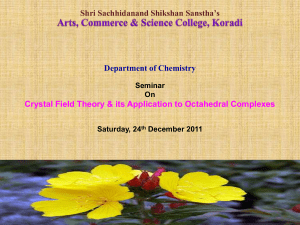
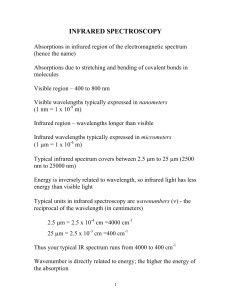
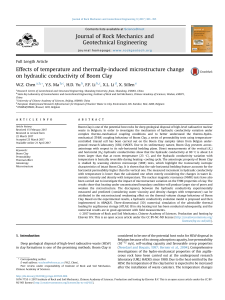
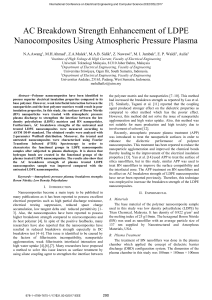
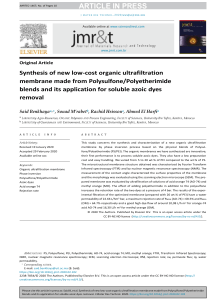
![[20834799 - Advances in Materials Science] Synthesis and Characterization of Poly(Acrylic Acid) Organo-Modified Nanohydroxyapatite Nanocomposites Thermal, Optical and Biocompatibility Properties](http://s1.studylibid.com/store/data/004280185_1-139b558dd3092d007358ca897159cce2-300x300.png)
